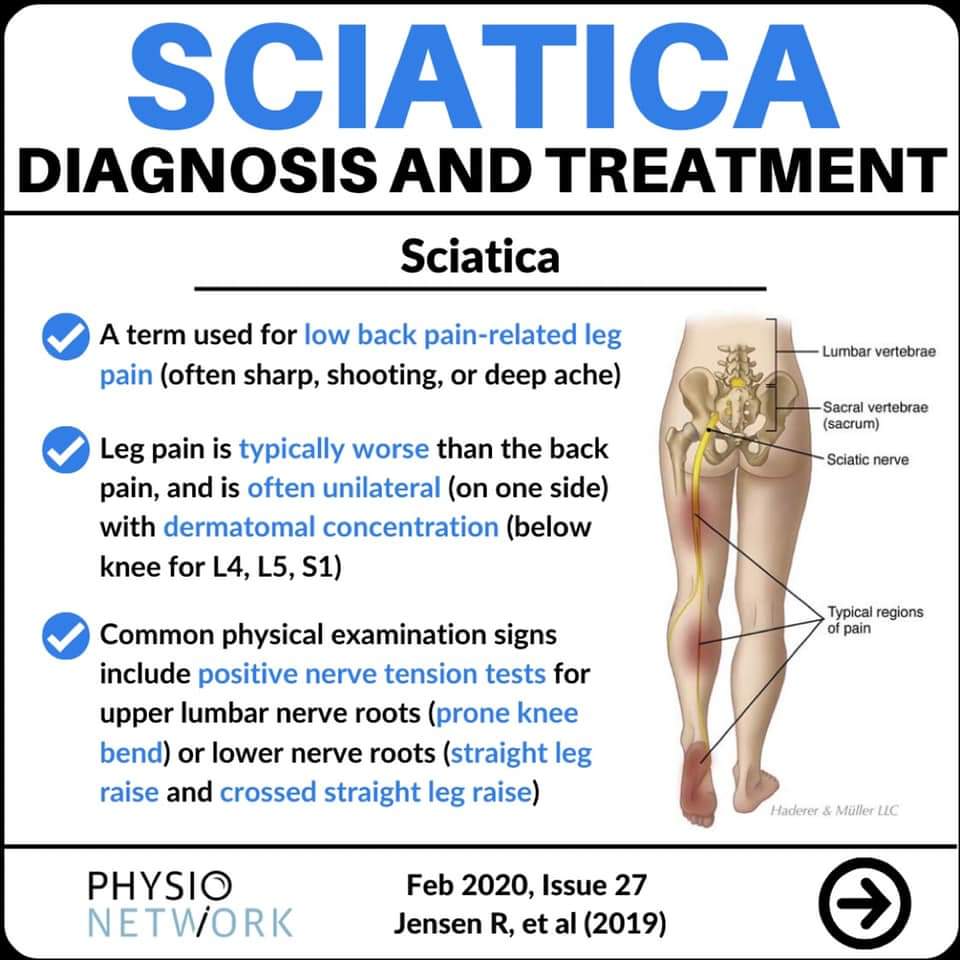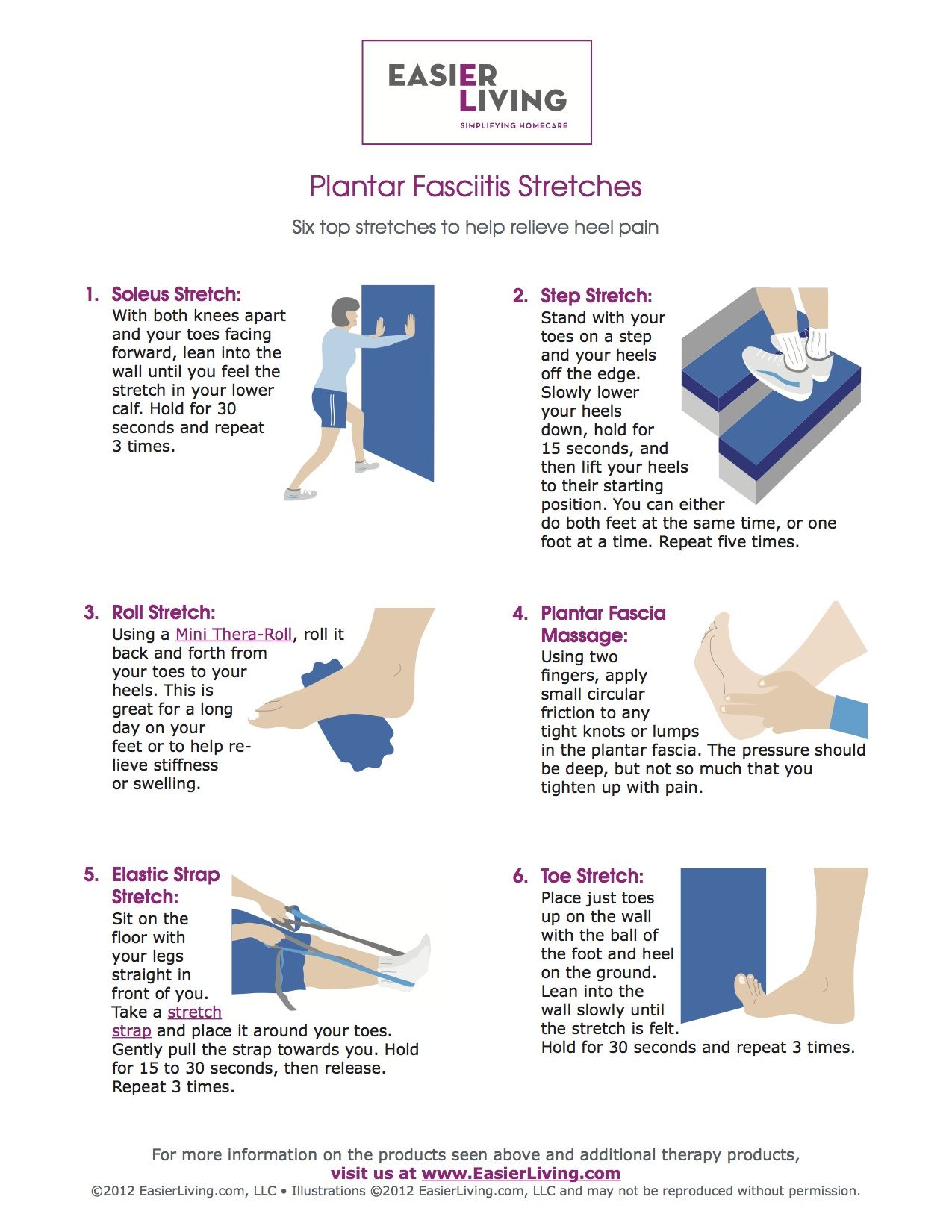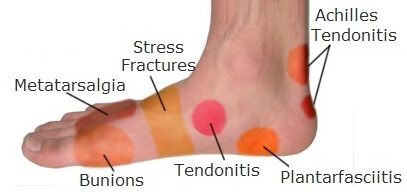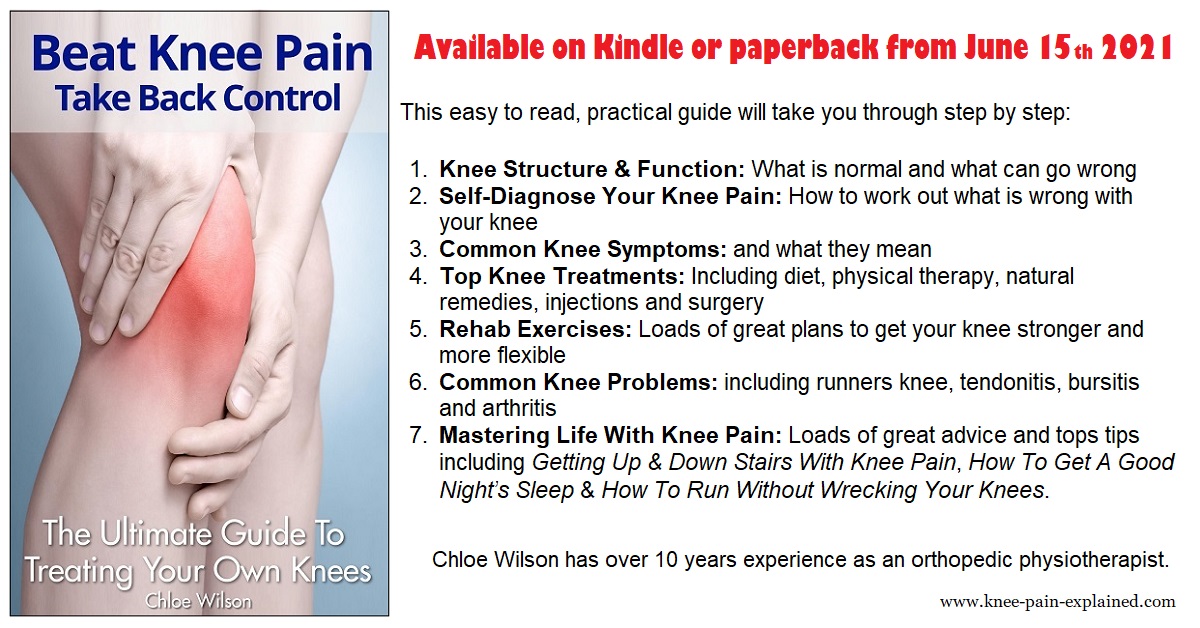Stabbing Pains in Heel: Plantar Fasciitis – Symptoms and Causes
What is the cause of stabbing pains in the heel? Is it plantar fasciitis. Discover the real problem behind this common foot complaint and the effective treatments.
Understanding Plantar Fasciitis: The Proper Name and the Hidden Problem
Stabbing heel pain is one of the most common foot complaints, and the most frequent cause is plantar fasciitis, or rather, plantar fasciocis. This may come as a surprise to some, as there is a potential for misdiagnosis due to a frequently overlooked nerve problem. In this article, we will delve deeper into plantar fasciocis, the pain, treatments, and supporting research.
The Anatomy of Heel Pain: Where the Fascia Connects
The sharp, stabbing heel pain that frequently catches your attention when getting out of bed in the morning is often the result of the fascia connecting to the heel bone and extending out into the ball of your foot. Most people misunderstand plantar fasciitis as a tendon or a ligament, when in fact, it is a tight connective tissue.

What Causes Plantar Fasciocis?
With every step you take, the fascia is stretched and pulled from your heel, creating tension. Children and teenagers seldom have plantar fasciocis, as their fascia is flexible and stretches rather than pulls from the heel.
Treating Plantar Fasciocis: Home Remedies and Beyond
There are a multitude of treatments for plantar fasciocis, including home remedies such as icing, anti-inflammatories, night splints, stretching exercises, supportive shoes, arch supports, and ice packs. These can be helpful in the early stages of heel pain, as they can potentially assist in reducing the tension of the fascia in the heel. However, these home remedies often only provide partial improvement, leaving unresolved symptoms.
The Real Problem: Tissue Deterioration, Not Inflammation
According to science, the fascia is not inflamed, but rather the tissue is deteriorating. A study by Dr. Harvey Lemont found that out of 50 plantar fascia specimens taken during surgery for plantar fasciitis, only one showed inflammatory changes, while the other 49 showed the tissue was deteriorating, leading to the term “plantar fasciocis”.

Effective Treatments for Plantar Fasciocis
Since the tissue is deteriorating, not inflamed, traditional treatments like ice, anti-inflammatory medication, or cortisone injections may not have high success rates. Instead, regenerative medicine techniques, such as the use of placenta cells or umbilical cord fluids to repair the damaged fascia tissue, have proven to be more effective.
The Hidden Problem: Nerve Pain
Another potential cause of heel pain is nerve pain, which can mimic the symptoms of plantar fasciocis. A small nerve branch called the medial calcaneal nerve, which travels from the ankle region to the bottom of the foot, can become irritated and cause sharp, stabbing heel pain. This type of pain can be effectively treated with a series of cortisone injections or laser therapy.
Diagnosing the Cause of Your Heel Pain
To determine the underlying cause of your heel pain, it is essential to undergo an ultrasound examination of the heel. This diagnostic tool can help identify whether the pain is truly due to fascia issues or if it is a nerve problem. If the fascia appears normal, the nerve problem should be suspected.

Can You Have Both Plantar Fasciocis and Nerve Pain?
Yes, it is not uncommon to have both plantar fasciocis and nerve pain. The thicker the fascia becomes, the more likely the nerve may become irritated, leading to a dual condition.
The Importance of Proper Diagnosis
If you have tried many conservative treatments for plantar fasciitis and still have sharp, stabbing heel pain, it is crucial to consider the possibility of a nerve problem as the underlying cause. Proper diagnosis is essential for effective treatment and long-term relief.
Conclusion
In summary, stabbing heel pain is often caused by plantar fasciocis, a condition where the connective tissue in the heel is deteriorating, rather than inflamed. While home remedies can provide some relief, more effective treatments, such as regenerative medicine and addressing potential nerve issues, may be necessary for lasting resolution of this common foot complaint.
Sharp Stabbing Heel Pain May Be Heel Tissue Deterioration.
Stabbing heel pain is one of the most common foot complaints. There can be a multitude of reasons for such pain, but the most frequent cause is plantar fasciitis. Plantar fasciitis is a name most are familiar with. However, in this blog, you will see me use the proper name, plantar fasciocis. This may come to a shock for some, but there is the potential you may be misdiagnosed because of a nerve problem that is frequently overlooked by health professionals. As you scroll through this blog, I will dive deeper into plantar fasciocis, pain, treatments, and supporting research.
This is the pain that frequently catches your attention when getting out of bed in the morning. Your heel makes an impact with the ground, and the first steps out of bed are painful. But, after a few minutes, the pain typically fades. So why the heel? Well, this is where the fascia connects to the heel bone, extending out into the ball of your foot. Most misunderstand plantar fasciitis as a tendon or a ligament, when in fact, by true definitions, it is tight connective tissue.
Most misunderstand plantar fasciitis as a tendon or a ligament, when in fact, by true definitions, it is tight connective tissue.
What Causes Plantar fasciitis?
With every step you take, the fascia is stretched and pulled from your heel creating tension. Children and teenagers seldom have plantar fasciitis, as their fascia is flexible and stretches rather than pulls from the heel.
Treatments
When it comes to pain, there are a multitude of treatments which include home remedies. Icing, anti-inflammatories, night splints, stretching exercises, supportive shoes, arch supports, and ice packs. These all may be helpful if used in the early stages of your heel pain, as they can potentially assist in reducing the tension of fascia in the heel. More often than not, these home remedies can be successful in self-management of your pain, but with only partial improvement – leaving you with unresolved symptoms.
The Real Problem That No One is Talking About
Science says your fascia is not inflamed, but rather it’s the tissue that is deteriorating. I want to briefly make a bold and averse statement: doctors aren’t looking at science. Doctor Harvey Lemont did a study taking fifty plantar fascia specimens when he performed surgery for plantar fasciitis 1. Out of 50 specimens, only one came back showing inflammatory changes. The other 49 showed the tissue was deteriorating, thus creating the term plantar fasciocis 1.
I want to briefly make a bold and averse statement: doctors aren’t looking at science. Doctor Harvey Lemont did a study taking fifty plantar fascia specimens when he performed surgery for plantar fasciitis 1. Out of 50 specimens, only one came back showing inflammatory changes. The other 49 showed the tissue was deteriorating, thus creating the term plantar fasciocis 1.
How Does that Change Treatments?
Home remedies may still be used, but because we now know that the tissue is inflamed, this explains why the pain is so persistent. Using ice, anti-inflammatory medication, or cortisone injections may not have high success rates. Unfortunaltey, many podiatrists continue to recommend cortisone injections offering only temporary relief.
Regenerative Medicine
At Anderson Podiatry Center, we started using regenerative medicine to repair damaged fascia tissue over 13 years ago. We were one of the early pioneers of this technique, and we now use human cellular tissue products such as placenta cells or umbilical cord fluids to repair fascia. We find this far more successful than cortisone.
We find this far more successful than cortisone.
Supporting the Foot
Yes, podiatrists recommend custom orthotics specifically made for your foot type to reduce the pulling of the fascia from your heel with each step you take.
Nerve Pain
This is the hidden problem that can mimic plantar fasciitis. There is a small nerve branch that comes from a region of the foot and ankle called the tarsal tunnel, just like carpal tunnel in the hand. The nerve going through this region travels to the bottom of the foot, into the arch and toes. Within the ankle region, a small branch travels beneath the heel from the ankle area called the medial calcaneal nerve. So, how is this treated? Typically, a series of two cortisone injections can reverse this type of heel pain. Additionally, a laser can also be effective.
How Do WE Know What You Have?
To begin, every patient we see with heel pain has an ultrasound examination of their heel. We know what the normal appearance of fascia should be by immense studies that have been performed. Generally, a patient with plantar fascia pain will have a thicker and darker appearing fascia in the area where it attaches to the heel bone. A diagnostic ultrasound is extremely useful to ensure that your pain is truly from fascia. If the fascia looks normal, we will then suspect the nerve problem.
We know what the normal appearance of fascia should be by immense studies that have been performed. Generally, a patient with plantar fascia pain will have a thicker and darker appearing fascia in the area where it attaches to the heel bone. A diagnostic ultrasound is extremely useful to ensure that your pain is truly from fascia. If the fascia looks normal, we will then suspect the nerve problem.
Can You Have Plantar Fasciitis and Nerve Pain?
Yes, it is not uncommon from our clinical examination and diagnostic ultrasound to discover both. It is thought that the thicker the fascia becomes, the more likely the nerve may become irritated.
Summary
So, this may mean for you that if you’ve had many of the conservative treatments for plantar fasciitis, and you still have that sharp stabbing heel pain, your nerve may be the issue. If you are having stabbing pain in the heel of your foot, don’t assume it’s always going to be plantar fasciitis. You could be having nerve pain. And finally, understand that your heel pain may be from a fascia that is deteriorating (plantar fasciosis) and not inflamed. This gives you a whole new way of looking at the problem and a possible solution that could be the use of regenerative medicine!
And finally, understand that your heel pain may be from a fascia that is deteriorating (plantar fasciosis) and not inflamed. This gives you a whole new way of looking at the problem and a possible solution that could be the use of regenerative medicine!
References
1 Lemont, H., Ammirati, K. M., & Usen, N. (2003). Plantar fasciitis: a degenerative process (fasciosis) without inflammation. Journal of the American Podiatric Medical Association, 93(3), 234–237. https://doi.org/10.7547/87507315-93-3-234
Plantar fasciitis | Sparrow
Overview
Plantar fasciitis (PLAN-tur fas-e-I-tis) is one of the most common causes of heel pain. It involves inflammation of a thick band of tissue that runs across the bottom of each foot and connects the heel bone to the toes (plantar fascia).
Plantar fasciitis commonly causes stabbing pain that usually occurs with your first steps in the morning. As you get up and move, the pain normally decreases, but it might return after long periods of standing or when you stand up after sitting.
The cause of plantar fasciitis is poorly understood. It is more common in runners and in people who are overweight.
Symptoms
Plantar fasciitis typically causes a stabbing pain in the bottom of your foot near the heel. The pain is usually the worst with the first few steps after awakening, although it can also be triggered by long periods of standing or when you get up from sitting.
Causes
The plantar fascia is a band of tissue (fascia) that connects your heel bone to the base of your toes. It supports the arch of the foot and absorbs shock when walking.
Tension and stress on the fascia can cause small tears. Repeated stretching and tearing of the facia can irritate or inflame it, although the cause remains unclear in many cases of plantar fasciitis.
Risk factors
Even though plantar fasciitis can develop without an obvious cause, some factors can increase your risk of developing this condition. They include:
- Age. Plantar fasciitis is most common in people between the ages of 40 and 60.

- Certain types of exercise. Activities that place a lot of stress on your heel and attached tissue — such as long-distance running, ballet dancing and aerobic dance — can contribute to the onset of plantar fasciitis.
- Foot mechanics. Flat feet, a high arch or even an atypical pattern of walking can affect the way weight is distributed when you’re standing and can put added stress on the plantar fascia.
- Obesity. Excess pounds put extra stress on your plantar fascia.
- Occupations that keep you on your feet. Factory workers, teachers and others who spend most of their work hours walking or standing on hard surfaces can be at increased risk of plantar fasciitis.
Complications
Ignoring plantar fasciitis can result in chronic heel pain that hinders your regular activities. You’re likely to change your walk to try to avoid plantar fasciitis pain, which might lead to foot, knee, hip or back problems.
Diagnosis
Plantar fasciitis is diagnosed based on your medical history and physical examination. During the exam, your health care provider will check for areas of tenderness in your foot. The location of your pain can help determine its cause.
Imaging tests
Usually no tests are necessary. Your health care provider might suggest an X-ray or MRI to make sure another problem, such as a stress fracture, is not causing your pain.
Sometimes an X-ray shows a piece of bone sticking out (spur) from the heel bone. In the past, these bone spurs were often blamed for heel pain and removed surgically. But many people who have bone spurs on their heels have no heel pain.
Treatment
Most people who have plantar fasciitis recover in several months with conservative treatment, such as icing the painful area, stretching, and modifying or avoiding activities that cause pain.
Medications
Pain relievers such as ibuprofen (Advil, Motrin IB, others) and naproxen sodium (Aleve) can ease the pain and inflammation of plantar fasciitis.
Therapies
Physical therapy or using special devices might relieve symptoms.
- Physical therapy. A physical therapist can show you exercises to stretch the plantar fascia and Achilles tendon and to strengthen lower leg muscles. A therapist might also teach you to apply athletic taping to support the bottom of your foot.
- Night splints. Your physical therapist or health care provider might recommend that you wear a splint that holds the plantar fascia and Achilles tendon in a lengthened position overnight to promote stretching while you sleep.
- Orthotics. Your health care provider might prescribe off-the-shelf or custom-fitted arch supports (orthotics) to distribute the pressure on your feet more evenly.
- Walking boot, canes or crutches. Your health care provider might recommend one of these for a brief period either to keep you from moving your foot or to keep you from placing your full weight on your foot.

Surgical or other procedures
If more-conservative measures aren’t working after several months, your health care provider might recommend:
- Injections. Injecting steroid medication into the tender area can provide temporary pain relief. Multiple shots aren’t recommended because they can weaken your plantar fascia and possibly cause it to rupture. Platelet-rich plasma obtained from your own blood can be injected into the tender area to promote tissue healing. Ultrasound imaging during injections can assist in precise needle placement.
- Extracorporeal shock wave therapy. Sound waves are directed at the area of heel pain to stimulate healing. This is for chronic plantar fasciitis that hasn’t responded to more-conservative treatments. Some studies show promising results, though this therapy hasn’t been shown to be consistently effective.
- Ultrasonic tissue repair. This minimally invasive technology uses ultrasound imaging to guide a needlelike probe into the damaged plantar fascia tissue.
 The probe tip then vibrates rapidly to break up the damaged tissue, which is suctioned out.
The probe tip then vibrates rapidly to break up the damaged tissue, which is suctioned out. - Surgery. Few people need surgery to detach the plantar fascia from the heel bone. It is generally an option only when the pain is severe and other treatments have failed. It can be done as an open procedure or through a small incision with local anesthesia.
Lifestyle and home remedies
To reduce the pain of plantar fasciitis, try these self-care tips:
- Maintain a healthy weight. Extra weight can put extra stress on your plantar fascia.
- Choose supportive shoes. Buy shoes with a low to moderate heel, thick soles, good arch support and extra cushioning. Don’t wear flats or walk barefoot.
- Don’t wear worn-out athletic shoes. Replace your old athletic shoes before they stop supporting and cushioning your feet.
- Change your sport. Try a low-impact sport, such as swimming or bicycling, instead of walking or jogging.

- Apply ice. Hold a cloth-covered ice pack over the area of pain for 15 minutes three or four times a day to help reduce pain and inflammation. Or try rolling a frozen bottle of water under your foot for an ice massage.
- Stretch your arches. Simple home exercises can stretch your plantar fascia, Achilles tendon and calf muscles.
Preparing for an appointment
Your health care provider might refer you to a provider who specializes in foot disorders or sports medicine.
What you can do
Make a list of:
- Your symptoms, and when they started
- Key personal information, including your and your family’s medical history and activities you do that could have contributed to your symptoms
- Medications, vitamins or other supplements you take, including doses
- Questions to ask the health care provider
For plantar fasciitis, basic questions to ask your health care provider include:
- What’s likely causing my symptoms?
- What tests do I need?
- Is my condition likely temporary or chronic?
- What’s the best course of action?
- What are the alternatives to the primary approach you’re suggesting?
- Are there restrictions I need to follow?
- Are there brochures or other printed material I can have? What websites do you recommend?
Don’t hesitate to ask other questions.
What to expect from your doctor
Your health care provider is likely to ask you questions, such as:
- Do your symptoms tend to occur at a particular time of day?
- What types of shoes do you usually wear?
- Are you a runner, or do you participate in any sports that involve running?
- Do you have a physically demanding job?
- Have you had problems with your feet before?
- Do you feel pain anywhere besides your feet?
- What, if anything, seems to improve your symptoms?
- What, if anything, appears to worsen your symptoms?
Heel pain when walking: causes and treatments
Heel pain when walking can come on suddenly. However, pain does not appear just like that, even if there are no other symptoms. Therefore, it is imperative to find out the cause of heel pain in order to prevent the risk of developing diseases of the osteoarticular apparatus.
The nature and causes of pain
Many people suffer from heel pain, and women more often than men, because they wear high heels. The human heel acts as a shock absorber when walking, therefore, with heavy loads on the musculoskeletal system, pain may occur in this part of the foot.
The human heel acts as a shock absorber when walking, therefore, with heavy loads on the musculoskeletal system, pain may occur in this part of the foot.
If it’s due to uncomfortable shoes, long time on your feet, or other obvious reasons, don’t worry. It is only necessary to eliminate the cause of excessive load on the foot, as there will be no discomfort when walking. But if the pains are regular and occur even during a leisurely walk, it is necessary to find out the cause of their appearance and take the necessary measures to eliminate the disease that causes discomfort.
The most common causes of heel pain are:
- Change in body weight. With a sharp set of mass, the load on the legs increases dramatically. And with rapid weight loss, subcutaneous fat in the heel atrophies, which also causes discomfort during physical activity.
- Injury and overload. A heel bruise that entails a crack or fracture, stretching or rupture of the tendon also often leads to severe pain.

- Diseases. There are many diseases of the feet, but a person ignorant of medicine is unlikely to identify the cause of pain in the heel. In this case, it is better to consult a doctor and describe in detail the nature of the pain – sharp, dull, cutting, stabbing, aching, shooting or burning.
Watch this video on YouTube
Possible diseases
Different diseases cause different sensations when stepping on the heel. Most often, discomfort in the foot when walking is associated with such diseases as:
- plantar fasciitis;
- Achilles tendinitis;
- erythromelalgia;
- Calcaneal apophysitis, etc.
Plantar fasciitis is popularly called “heel spur”. This is the most common disease that causes discomfort in the back of the foot. The disease is characterized by inflammation of the plantar aponeurosis.
The name “calcaneal spur” is associated with the sensations that the patient experiences when walking – as if stepping on a sharp object. At rest, pain may not be felt or may be aching in nature. However, when walking, especially after sleep or a long rest, the patient feels a sharp unbearable pain with every step.
At rest, pain may not be felt or may be aching in nature. However, when walking, especially after sleep or a long rest, the patient feels a sharp unbearable pain with every step.
Achilles tendonitis is characterized by tissue damage or inflammation. Most often, this disease occurs in athletes or in people whose work is associated with overstrain of the osteoarticular apparatus. When probing the back of the foot, the patient feels discomfort, and with loads on the legs, he feels acute pain.
Erythromelalgia is a disease characterized by dilation of capillaries and small vessels. The disease is exacerbated by exposure to heat. Even lying down under a warm blanket, the patient will feel a burning sensation in the heel when walking.
Apophysitis of the calcaneus is a disease associated with impaired growth of the bone tissue of the foot and lower leg. There is apophysitis of the calcaneus in children and adolescents. The disease is caused by sharp and large loads on the ankle joint, foot injuries, obesity, and genetic factors.
The disease is caused by sharp and large loads on the ankle joint, foot injuries, obesity, and genetic factors.
Therapies
Medical Therapy
Because heel pain can be caused by many things, from plantar nerve damage to being overweight, there are different ways to treat it. Medicines should be prescribed only by a doctor after diagnosing the disease. Even a similar nature of pain can be treated with different means.
Most often, the doctor prescribes anti-inflammatory drugs . Non-steroidal drugs relieve pain, and are also used as intramuscular injections for fasciitis.
The disadvantage of non-steroidal drugs is a large number of side effects, so long-term drug therapy with these drugs is contraindicated.
Analgesic drugs relieve pain and inflammation caused by diseases such as fasciitis and arthritis. This type of anti-inflammatory drug is available as injections, rectal suppositories, tablets, ointments, and gels.
Liquid anesthetics in the form of a therapeutic solution are used for external use. They warm the damaged area of the foot, help relieve inflammation and swelling.
Folk remedies
When pain in the back of the foot is associated with injury or overload, then you can get rid of discomfort at home. Slight swelling, swelling, pain only in the left or right heel are removed by folk remedies.
At home you can prepare:
- infusions and tinctures;
- compresses;
- baths.
Infusions are taken orally to relieve pain. To prepare the solution, you will need water and medicinal herb marsh cinquefoil. 1 st. l. dry raw materials are diluted in 100 ml of boiled water and allowed to brew a little. Take for 3 weeks 3 times a day before meals. Walnuts also have anti-inflammatory properties. To prepare a tincture, 10 g of nuts are poured into 100 mg of vodka and infused for 10 days. Take 1 tbsp. l. 3 times a day before meals for 3 weeks.
l. 3 times a day before meals for 3 weeks.
Compresses help not only eliminate the symptoms of the disease, but also cure the disease itself. The prepared mixture for the compress is spread on gauze. Then the foot is wrapped with gauze and the compress is left overnight. Wash your feet in warm water in the morning.
Boiled potatoes are often used in the mixture. It is mixed with medical alcohol, honey and even kerosene. But you can also use hot mashed potatoes without additives. To prolong the warming effect that hot potatoes have, the compress is wrapped on top with a plastic bag.
A compress of 1 tbsp will help get rid of a heel spur. l. honey, edible salt and 50 ml of iodine. This mixture is enough for 5 days of treatment. At night, a compress is applied to the sore heel and fixed on the foot with a bandage. Grated black radish helps get rid of heel spurs. Compresses with black radish are done every night until complete recovery.
Baths help eliminate discomfort after walking. For the preparation of baths, warm water and medicinal plants such as nettle, chamomile, and burdock are used. In warm water, you can also add 1 tbsp. l. baking soda. Contrasting baths with alternating cold and hot water perfectly relieve stress.
For the preparation of baths, warm water and medicinal plants such as nettle, chamomile, and burdock are used. In warm water, you can also add 1 tbsp. l. baking soda. Contrasting baths with alternating cold and hot water perfectly relieve stress.
Methods of pain relief
After a heavy load on the legs, an ice compress will quickly relieve pain in the heel. To do this, put ice cubes in a bag and apply to a sore spot. Hold the compress for 5-10 minutes.
Self-massage will also help to anesthetize the heel area. To do this, put a small hard round ball under the heel and roll it over. At work, you can tap on the heel with a pen or pencil. At home, it is useful to walk on a rug with heated coarse salt. Massage improves blood circulation, which contributes not only to the elimination of pain, but also to the removal of inflammation.
Prevention
Heel pain is often caused by an accidental injury to the foot, sometimes it is caused by a hereditary predisposition. However, most risk factors can be prevented in advance if the right preventive measures are taken.
However, most risk factors can be prevented in advance if the right preventive measures are taken.
Obesity and excessive load on the legs lead to problems with the foot and the heel as well. A balanced diet and exercise, on the other hand, contribute to a healthy foot condition.
The choice of proper shoes is of great importance for the prevention of heel diseases. It should sit comfortably on the leg and have a small heel. It is good if the shoes or boots have an orthopedic insole. But if the shoes are soft, comfortable and sized, then such an insole is not needed. Narrow or high shoes, which also do not allow air to pass through, should not be worn all the time.
Watch this video on YouTube
Comfortable shoes are essential for athletes. Runners need to change their running shoes frequently. So that the joints of the legs do not experience a strong load during running, after training, it is imperative to do several stretching and flexibility exercises.
Heel pain
Sanatorium treatment in Kislovodsk can be a continuation of inpatient or outpatient treatment. If you need certain spa treatments to recover from an illness, accident or occupational disease, you can use these services.
Various natural resources and physical means are used in sanatoriums:
- mineral waters;
- dirt;
- hydrotherapy;
- physiotherapy;
- kinesitherapy.
A sanatorium is a place with:
- favorable and salubrious climate;
- beautiful natural environment with an abundance of natural healing materials, mineral waters;
- well-organized medical service and appropriate medical facilities, such as bathrooms, physiotherapy and pump rooms.
Several reasons to choose a spa treatment in Kislovodsk?
Spa treatment takes place in isolation from the stresses of everyday life and the harmful conditions of the material environment of work and leisure.
Therapeutic treatment at the resorts should be multidirectional, as this is the idea of the whole therapy. It includes physiotherapy in the broad sense of the word, ecology, patient education, nutrition and psychology. All specialties of clinical medicine are relevant.
Before choosing a resort, it is important to familiarize yourself with its leading profile. Not every resort will specialize in a particular disease. In some sanatoriums, the range of products is designed specifically for the treatment of cardiovascular diseases, in others – for the treatment of respiratory diseases. Others treat diseases of the nervous system or rheumatology.
This treatment has the properties of both specific and non-specific therapy and ideally combines the three main forms of medical treatment:
- medical;
- rehabilitation;
- prevention.
The first gives results relatively quickly, while prevention and rehabilitation require much more time.
For whom is spa treatment recommended?
Spa treatment is recommended for patients after accidents, after illnesses and those who struggle with occupational diseases, as well as for those who simply want to relax away from the bustle of the city. Indications for spa treatment are such health problems as:
- rheumatological diseases;
- cardiovascular diseases, including hypertension, as well as chronic ischemic heart disease, late rehabilitation after myocardial infarction, heart transplantation, or surgery for aneurysms, coronary vessels, or valve defects;
- respiratory diseases, including bronchial asthma and chronic obstructive pulmonary disease;
- neurological diseases, for example, demyelinating diseases, paralyzing syndromes, disorders associated with the nerve plexuses and spinal roots;
Spa treatment takes a lot of time. However, as a consequence, it contributes to the continued improvement of health for a long time and without additional procedures.



 The probe tip then vibrates rapidly to break up the damaged tissue, which is suctioned out.
The probe tip then vibrates rapidly to break up the damaged tissue, which is suctioned out.
